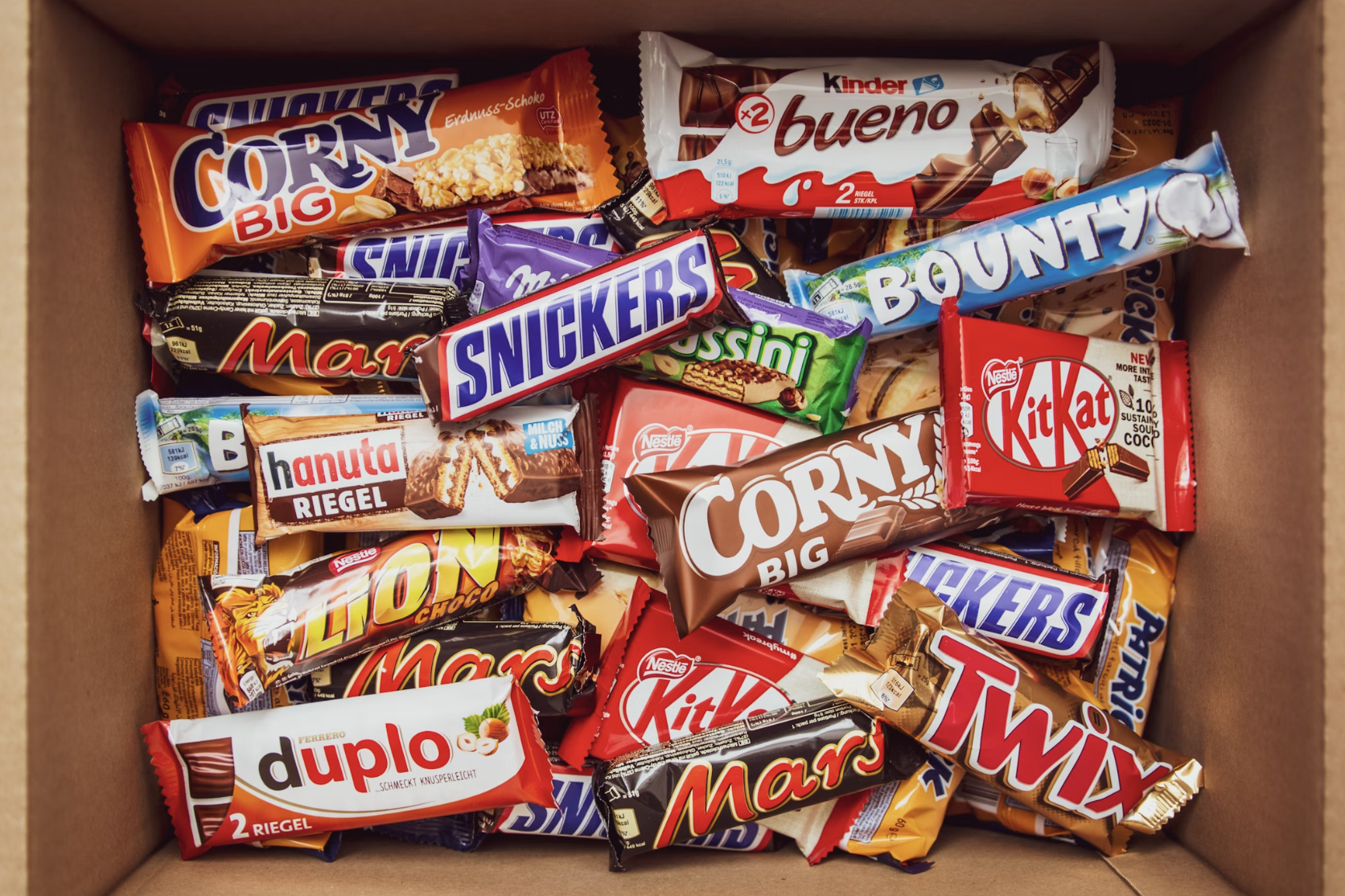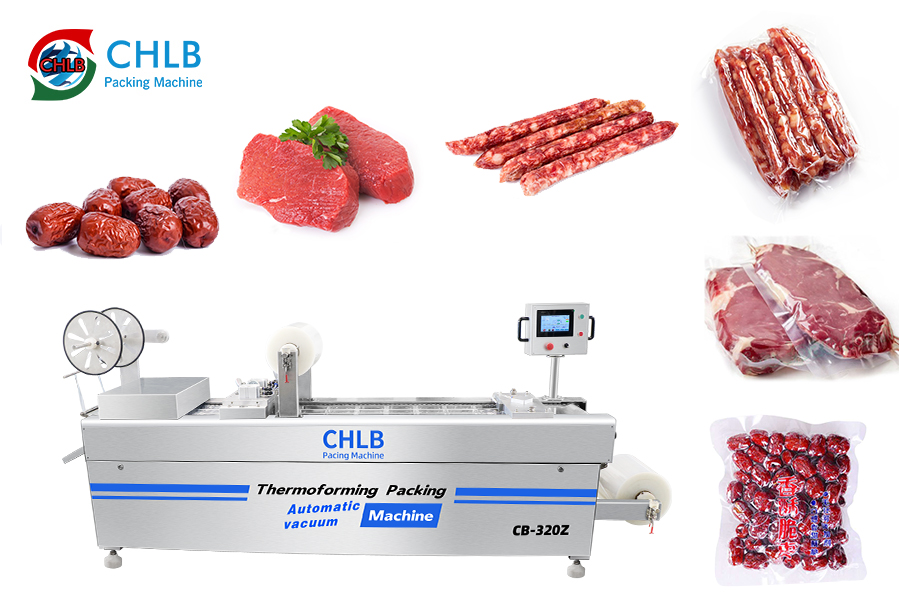If you work with clay products, you know that consistent, high-quality packaging is essential. A reliable clay packing machine not only saves time but also ensures each pack meets your standards. 이 가이드에서는, we’ll walk you through the main types, how these machines work, and what to consider when choosing the perfect solution for your production line.
What Is a Clay Packing Machine
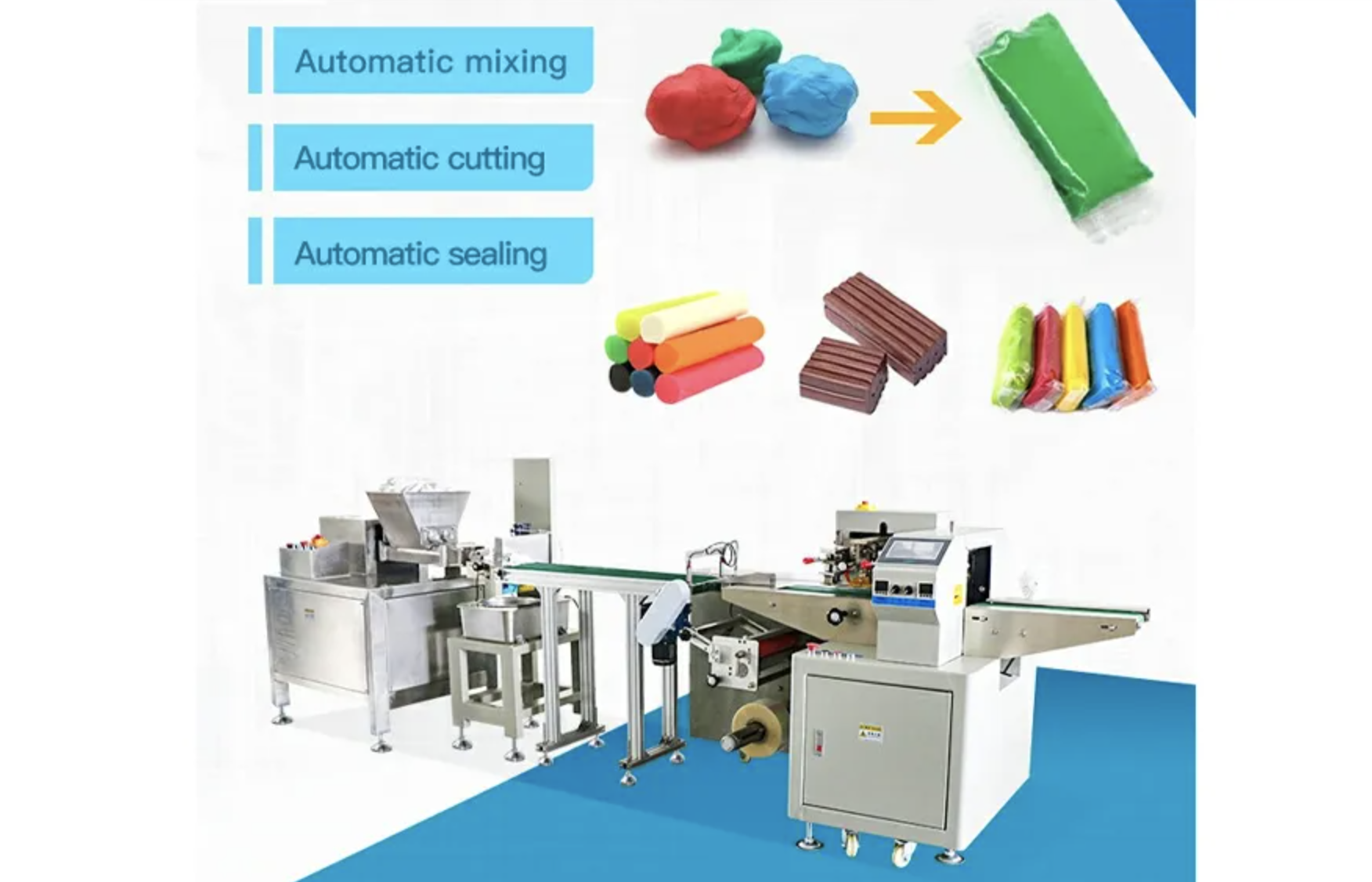
에이 점토 포장 기계 is an industrial device designed to automate the portioning, shaping, and packaging of clay. It works by feeding clay steadily into a portioning system that measures the correct amount for each package. The shaping unit then forms the clay into blocks, 실린더, or custom molds. And the sealing mechanism wraps it in film, 종이, 또는 호일, protecting it from moisture, dust, 그리고 오염.
Modern machines often include PLC-controlled automation, weight and consistency sensors, and adjustable dies or rollers, allowing you to handle clay of different textures without compromising quality. The stainless steel construction, non-stick surfaces, and easy-to-clean components ensure hygiene and durability. In practice, these features help standardize each package, reduce material waste, and improve production efficiency, making the machine a reliable solution for manufacturers, distributors, or anyone handling clay products.
Main Types of Clay Packing Machines
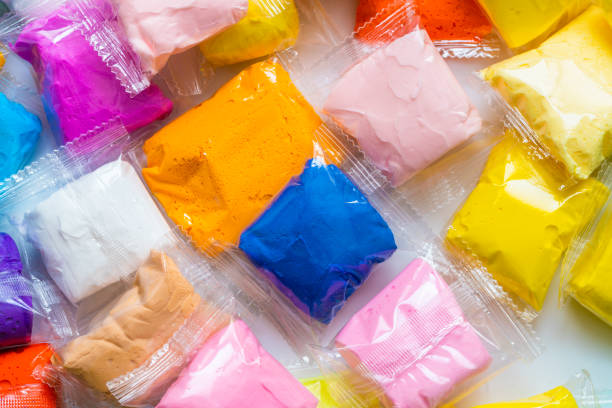
Clay packing machines are commonly classified by packaging method, a standard approach in the industry. Each type has its own working principle, suitable clay products, and operational considerations. Understanding these differences helps you choose the right machine for your production needs.
수직형 채우기 씰 (VFFS) 기계
Working Principle:
In a VFFS machine, clay is fed from the top into a forming tube. The machine shapes a flexible film into a vertical bag, fills it with the measured portion of clay, and seals the bag along the vertical seam. Sensors monitor the clay weight and film alignment to ensure each pack meets the target specifications.
Suitable Products:
Soft modeling clay, craft clay, and small consumer packs.
장점:
Compact and space-efficient design.
High-speed operation for small to medium packs.
Compatible with various film materials, including biodegradable options.
Limitations:
Limited maximum pack size.
Not ideal for very firm or irregularly shaped clay blocks.
Pro Tip:
If you handle consumer clay products where speed and uniformity are crucial, VFFS machines provide reliable portioning and sealing while maintaining consistent product presentation.
수평형 충전 밀봉 (HFFS) 기계
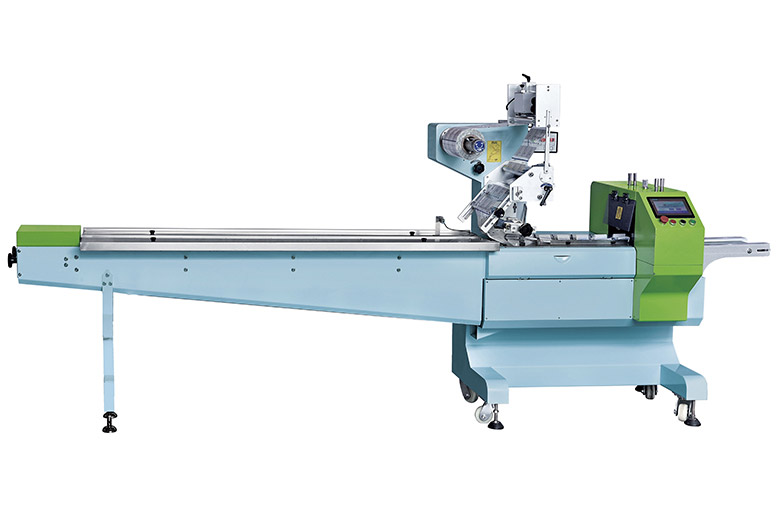
Working Principle:
Clay enters the machine horizontally, where it is aligned, portioned, and placed into pre-formed or formed horizontal packaging. Heat or pressure sealing ensures the package is airtight, and sensors can detect improper seals or underweight products. HFFS machines often integrate conveyors for continuous production.
Suitable Products:
Bar-shaped clay, medium to large blocks, and industrial pre-shaped clay units.
장점:
Creates neat, uniform packages ideal for retail display.
Handles firmer clay with less deformation.
Facilitates easy stacking and transport.
Limitations:
Larger footprint than vertical machines.
May be less efficient for very small packs compared to VFFS.
Pro Tip:
HFFS machines are preferred if you need high-quality packaging appearance or are producing heavier clay blocks, as the horizontal alignment minimizes deformation.
Multi-Head Combination Packing Machines
Working Principle:
These machines combine multi-head weighing systems with automated filling units. Multiple clay portions are weighed simultaneously, then distributed into individual packages at high speed. PLC-controlled systems synchronize weighing, portioning, and sealing to maintain consistent output.
Suitable Products:
High-volume production of small to medium packs, industrial clay, or pre-weighed consumer packs.
장점:
Exceptional production efficiency with simultaneous weighing.
Highly accurate portioning, minimizing material waste.
Integrates easily into automated production lines.
Limitations:
높은 초기 투자.
Requires skilled operators for calibration and maintenance.
Pro Tip:
For operations where speed and precision are critical, multi-head combination machines reduce manual labor while maintaining consistent product weight, which is particularly important for high-volume clay manufacturing.
Soft Clay / Semi-Solid Specialized Packaging Machines
Working Principle:
These machines use piston or screw filling systems to gently transfer soft, sticky, or semi-solid clay into packages. The filling mechanism is designed to maintain the clay’s shape and consistency, while integrated sealing units prevent contamination or moisture exposure. Adjustable speed and pressure controls allow the machine to handle variations in clay viscosity.
Suitable Products:
Wet modeling clay, sculpting clay, or semi-solid craft clay that requires shape preservation.
장점:
Protects soft clay from deformation.
Handles high-moisture or sticky products efficiently.
Maintains precise portioning and consistent packaging.
Limitations:
Slower throughput compared to standard VFFS or HFFS machines.
Often designed for specific clay types, limiting versatility.
Pro Tip:
If your clay has high moisture content or is easily deformed, using a soft clay specialized machine ensures product quality and consistency while minimizing waste.
How to Operate a Clay Packing Machine
단계 1: Preparation
Before starting, you should inspect the machine to ensure that all key components, including the feeding system, weighing mechanism, sealing unit, and cutting tools, are functioning properly. 동시에, prepare the clay according to your packaging requirements, whether in blocks, 바, or soft clay suitable for the machine’s feeding system.
Make sure the clay is conditioned for smooth operation, and select the correct size and type of bags or film rolls to avoid sealing problems. 마지막으로, clean and sanitize the machine and packaging area, which is particularly important for food-grade or craft clay products.
단계 2: Set Machine Parameters
Once preparation is complete, set the machine parameters to match your production needs. Input the target weight for each package into the weighing system, adjust the sealing and cutting components to fit the packaging material, and set the production speed according to the clay’s consistency.
If your machine uses heated sealing, make sure to set the proper temperature to ensure strong and reliable seals. Accurate setup at this stage is crucial for maintaining product consistency and reducing material waste.
단계 3: Start Operation
Begin with an empty test run to ensure that the feeding, 계량, 충전재, and sealing systems are working correctly. Once everything is confirmed, feed the prepared clay into the machine. The machine will automatically measure, 모양, 채우다, and seal each package.
During production, closely monitor the clay’s shape, packaging integrity, and seal quality. If you notice any weight deviations, blockages, or sealing issues, pause the machine and adjust the parameters immediately to maintain consistent output and minimize waste.
단계 4: Shutdown and Maintenance
At the end of production, follow proper shutdown and maintenance procedures. Clean the feeding system, weighing units, and sealing components to remove any clay residue. Inspect wear-prone parts such as knives, screws, pistons, and rollers, and replace them as necessary.
Lubricate moving components according to the machine manual to ensure smooth operation and extend the machine’s lifespan. 마지막으로, record production data, including output, faults, and maintenance activities, to support efficient management and troubleshooting in future runs.
How to Choose the Right Clay Packing Machine
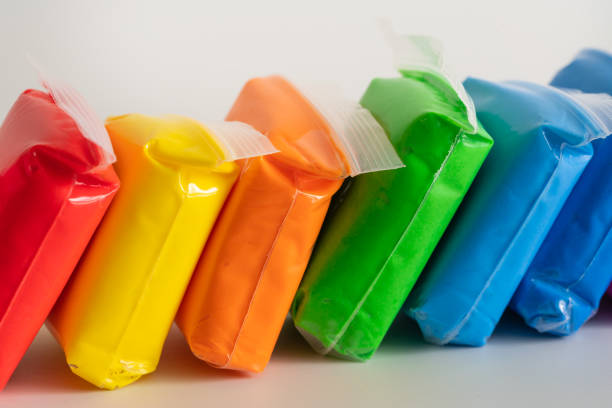
Clay Type and Consistency
A standard VFFS machine works well for dry or semi-soft clay, but if you frequently handle wet modeling clay, you’ll need a machine with a piston or screw-based filling system that preserves the clay’s shape without sticking or deformation. Choosing the wrong feeding system can lead to frequent blockages, material waste, and downtime—sometimes up to 5–10% of production loss on a busy line. You need a machine that feels smooth when operating and handles the material gently yet precisely.
생산 속도 및 용량
Some machines process 30–50 small packs per minute, while multi-head combination machines can handle hundreds simultaneously. For small consumer packs, a moderate-speed VFFS machine may suffice. For industrial clay or high-volume orders, a multi-head system with PLC control ensures uniformity and minimal waste. Even a 10% increase in efficiency can translate into thousands of dollars saved annually on material and labor.
Packaging Flexibility and Adaptability
Machines restricted to one bag size or film type limit your options as your product line grows. Adjustable dies, rollers, and modular components allow you to switch between block-shaped clay, 바, or soft modeling clay with minimal downtime. Testing the machine with your exact clay and packaging often reveals subtle issues, like minor deformation or film tension problems, that specifications alone cannot show.
Build Quality and Maintenance
Stainless steel frames, non-stick surfaces, and durable sealing jaws are essential for reliability, 위생, and long-term operation. Poorly built machines require constant adjustment, leading to operator fatigue and inconsistent output. Well-engineered systems with accessible parts, easy lubrication points, and clear maintenance guidance allow you to focus on production rather than troubleshooting.
After-Sales Support and Operator Training
Even the best machine can underperform without proper setup and guidance. Suppliers offering comprehensive training, responsive technical support, and readily available spare parts can save hours or even days of downtime. Selecting a partner that supports you throughout the machine’s lifecycle is as important as the machine itself.
최종 생각
Choosing the right clay packing machine is crucial for efficiency, 품질, and smooth production. At CHLB, we focus on designing professional machines that handle various clay types reliably, from soft modeling clay to firm blocks, while ensuring consistent quality. By selecting a machine suited to your needs, you reduce waste and improve output. Explore CHLB’s products today and see how our solutions can elevate your production line.
자주 묻는 질문
1. What is the ideal sealing method for clay packaging?
A clean, flat, airtight seal is best to preserve moisture and prevent contamination. Heated sealing or impulse sealing is commonly used for small and medium clay packs.
2. How does the filling capacity of a clay packing machine affect production?
Higher filling capacity increases throughput and reduces manual labor, ensuring faster production without compromising quality.
3. Can clay packing machines handle various clay types?
예, most modern machines can handle air-dry, polymer, or soft modeling clay with precise filling and minimal deformation.
4. What role does packaging material play in clay preservation?
Good-quality films like PET/PE or BOPP/CPP protect clay from moisture and air, keeping it soft and workable longer.
5. How can I extend the lifespan of my clay packing machine?
Implement a preventive maintenance plan, including regular cleaning, lubrication, and timely replacement of worn parts.


